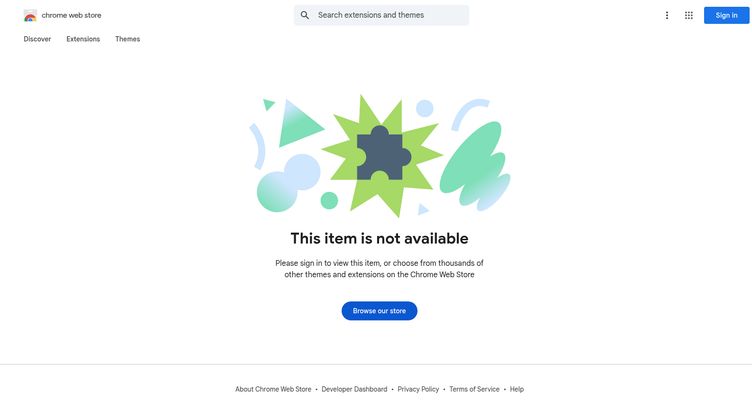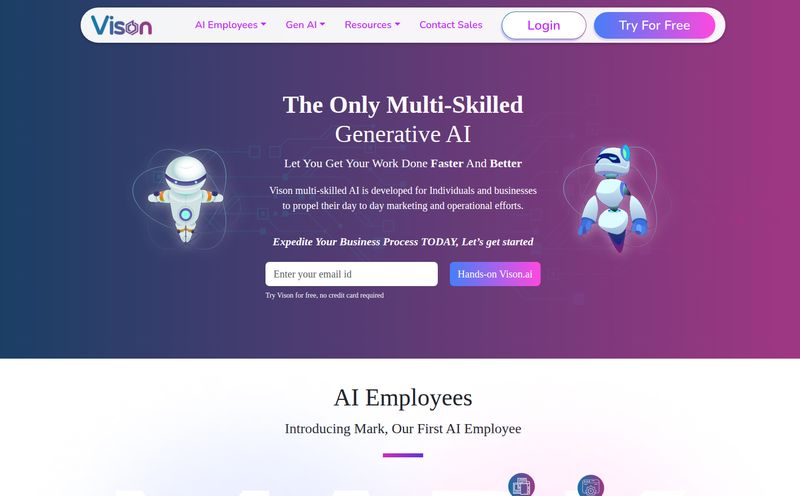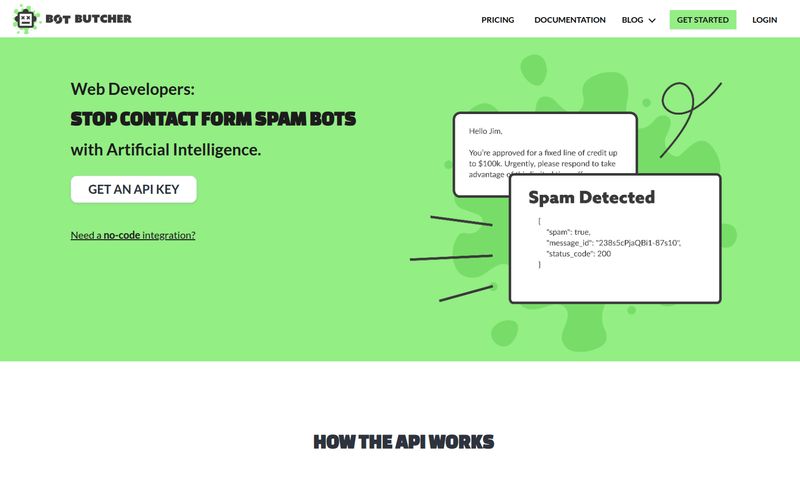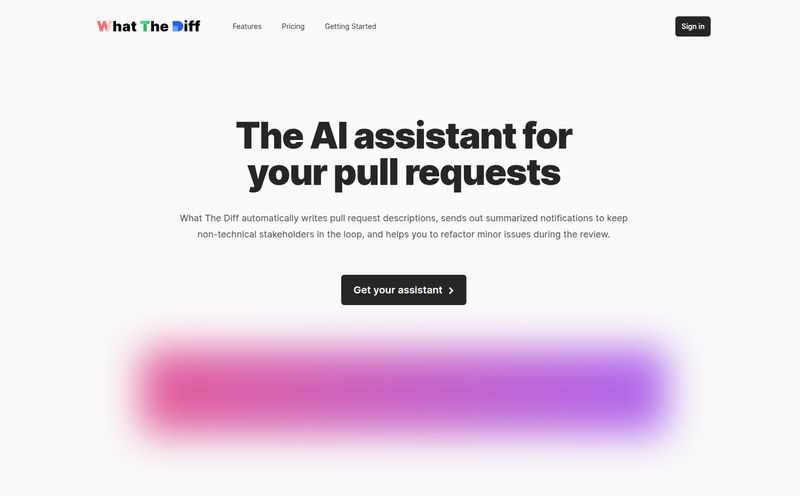In the world of SEO and digital marketing, we're all swimming in a sea of AI tools. Every single day, there's a new 'game-changer' that promises to write all your content, triple your traffic, and probably make you a perfect cup of coffee. Most of them, if we're being honest, are pretty thin wrappers around an OpenAI API key.
It's led to this weird gold rush where everyone is talking about AI, but very few are actually deploying it in a meaningful, scalable way within their organizations. It’s one thing to have a fun chatbot on your homepage. It’s another thing entirely to build a complex AI workflow that pulls from your company's private knowledge base, analyzes sales data, and automatically drafts personalized outreach for your team. That's the hard part. That’s the stuff that actually moves the needle.
And that, my friends, is where a platform like Scout enters the conversation. I stumbled upon it recently, and it’s not another one-click-magic-content-generator. It's more like a professional-grade workshop for building your own, custom AI machinery. Think less of a finished car and more of a high-end engine, chassis, and all the tools you need to build a vehicle tailored for your specific race track.
So What Is Scout, Exactly?
In a nutshell, Scout is a toolkit for building, launching, and scaling AI-enabled agents and workflows. It's designed for teams who have moved past the “Wow, AI is cool!” phase and are now in the “Okay, how do we make this a reliable part of our business?” phase. It’s for connecting all the dots.
You’re not just using a generic large language model (LLM); you’re creating systems. You can build AI agents that use multiple models in a sequence (a concept often called LLM Chaining), feed them your own secure data for context, and deploy them as internal tools or even public-facing products. It's the plumbing behind the AI magic, the stuff that makes it robust and scalable.

Visit Scout
This means it’s aimed squarely at developers, product managers, and tech-savvy teams. If you’re looking for a simple app to write a blog post, this ain’t it. But if you want to build an internal “copilot” for your customer service team that can diagnose issues from user tickets and suggest solutions from your technical documentation... well, now we’re talking. Scout is built for that kind of heavy lifting.
The Core Features That Caught My Eye
When I look at a new platform, I'm always trying to see past the marketing jargon. What are the actual, tangible tools in the box? With Scout, a few things stand out.
The Workflow Builder and LLM Chaining
This is the heart of the platform. Instead of a single call to an AI model, you can design a multi-step process. Imagine this: a new customer email comes in. Step 1: An AI agent categorizes the email (e.g., 'Sales Inquiry', 'Technical Support', 'Billing Question'). Step 2: Based on the category, it routes the information to a different, more specialized AI agent. The 'Technical Support' agent then pulls relevant data from your developer docs to draft a reply. That's chaining, and it's how you build sophisticated AI that doesn't just give generic answers.
Customizable Data Sources and Copilots
This is huge. An AI is only as good as its data. Scout lets you connect your own data sources—your company's knowledge base, your product database, your CRM. This process, often called Retrieval-Augmented Generation (RAG), is what gives the AI grounding and context. It stops the model from 'hallucinating' or making things up. You can then use this to build specialized Copilots for different teams, all running on the same secure, up-to-date information. It’s how you get an AI to sound like it actually works at your company.
The Grown-Up Stuff: API, SDK, and Performance Monitoring
For any serious deployment, you need to know what's working and what isn't. Scout provides an API and SDK, which means your developers can integrate these AI workflows deeply into your existing applications. More importantly, it includes tools for comprehensive testing and performance monitoring. You can see how often your agents are succeeding, where they're failing, and fine-tune them. This is what separates a weekend project from a production-grade business tool. Without this, you're just flying blind.
The Good, The Bad, and The Complicated
No tool is perfect, right? I’ve been in this game long enough to know that everything comes with trade-offs. Here's my honest take on Scout.
The big win here is scalability and speed of deployment. Building the infrastructure for these kinds of AI systems from scratch is a massive undertaking. Scout gives you the pre-built components to get a sophisticated agent up and running much faster. The versatility is also a major plus. You could build a content summarizer for the marketing team and a code reviewer for the engineering team on the same platform. And the integration with tools like Slack is just plain smart—bringing the AI to where your team already works.
Now, for the hurdles. The platform's biggest strength is also a potential weakness: it requires some technical know-how. This is not a no-code tool for the average marketer. You or your team will need to understand APIs, data structures, and the basic principles of how LLMs work. Secondly, the pricing can scale with usage. While the entry points are reasonable, if you build a wildly successful workflow that runs thousands of times a day, your costs will go up. This is standard for usage-based platforms, but something to plan for. Finally, you’re reliant on external AI models (like those from OpenAI, Anthropic, or Google). Your performance is tied to their performance, and your costs are tied to their API costs.
Let's Talk Money: A Breakdown of Scout's Pricing
I always head straight for the pricing page. It tells you so much about a company's philosophy and target audience. Scout's pricing model is pretty transparent, which I appreciate.
| Plan | Price | Key Features |
|---|---|---|
| Free | $0 / month | Includes 1M LLM input & output tokens, 2GB storage, 1k workflow invocations. Perfect for testing and small personal projects. |
| Pro | $49 / month | Includes 10M LLM input & output tokens, 10GB storage, 10k workflow invocations, plus pay-as-you-go overages. Ideal for small teams and initial production apps. |
| Enterprise | Custom | Custom limits, dedicated support, and advanced security features. For large-scale deployment in big companies. |
My take? The Free plan is genuinely useful. It's not one of those crippled free trials; you get enough tokens and invocations to actually build and test a proof-of-concept. The Pro plan seems like the sweet spot for many businesses looking to get their first real AI workflow into production without a massive upfront investment. The overage model means you won't get cut off if you have a spike in usage, which is good.
A Quick Detour: The Mystery of the Missing Chrome Extension
So, while I was doing my research, I hit a bit of a dead end. I was looking to see if Scout had a browser extension, maybe for quick access or capturing data. I thought I found a link to the Chrome Web Store, but... nope. It led to that dreaded "This item is not available" page.
What does it mean? I love little mysteries like this. Did they have an extension in beta and pull it back? Are they pivoting their strategy to focus purely on the backend toolkit? Or was it just a bad link? It's a small thing, but it's a reminder that even in the polished world of SaaS, things are always in flux. It makes the company feel more real, somehow. They're probably busy building out the core product, and a browser extension just wasn't the priority. I can respect that.
Frequently Asked Questions About Scout AI
- 1. Is Scout an AI model like ChatGPT?
- No, it's not a model itself. Scout is a platform that helps you build applications and workflows using other AI models (like GPT-4, Claude, etc.). It's the toolkit, not the raw material.
- 2. Do I absolutely need to be a developer to use Scout?
- It definitely helps. While the visual workflow builder makes the process easier, to get the most out of Scout—connecting data sources, integrating with the API—you'll want someone on your team who is comfortable with technical concepts. It’s a low-code platform, not a no-code one.
- 3. What kind of data can I connect to Scout?
- You can connect a wide range of custom data sources. Think of things like your internal wiki (built on Confluence or Notion), your company's product documentation, PDFs, or even databases. This is key to making the AI's responses relevant and accurate.
- 4. Is the Free plan good enough to start with?
- Absolutely. With a million input tokens, you can do a lot of testing and development. It's more than enough to build a functional prototype and see if the platform is a good fit for your needs before you ever have to pull out a credit card.
- 5. Can I use Scout to build a customer-facing chatbot?
- Yes, that's a prime use case. By connecting your own help documents and product info, you could build a far more effective support bot than the generic ones that frustrate users with irrelevant answers.
So, Should Scout Be in Your AI Toolkit?
Look, the AI hype train isn't slowing down, but the conversation is getting more mature. We're moving from novelty to utility. We're asking harder questions. It's not just "what can AI do?" but "how can we deploy it reliably, securely, and at scale?"
Scout is a compelling answer for a specific group of people. If you're a business or a developer who wants to build custom, data-aware AI solutions without starting from absolute scratch, it deserves a serious look. It provides the guardrails and the infrastructure to turn a cool AI concept into a real, working business process.
It's not a magic button. It's a power tool. And for the right builder, that's exactly what's needed to create something truly valuable.
Reference and Sources
- Scout Official Pricing Page: https://www.scoutos.com/pricing



